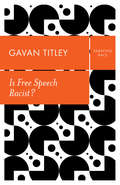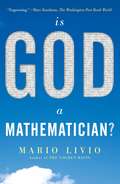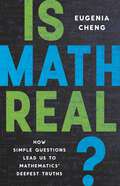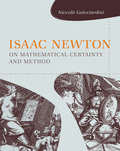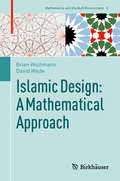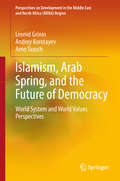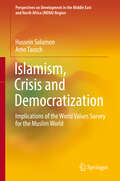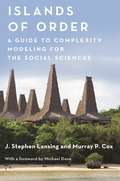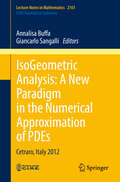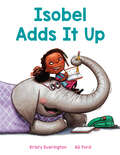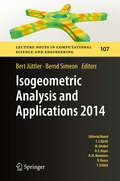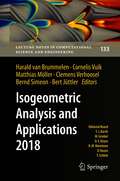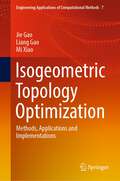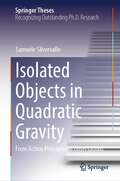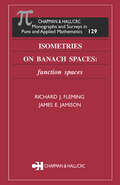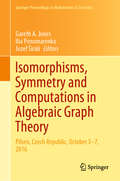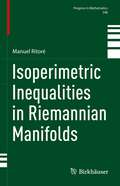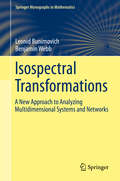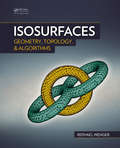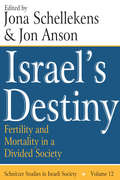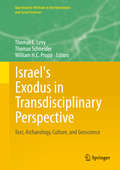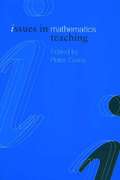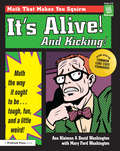- Table View
- List View
Is Free Speech Racist? (Debating Race)
by Gavan TitleyThe question of free speech is never far from the headlines and frequently declared to be in crisis. Starting from the observation that such debates so often focus on what can and cannot be said in relation to race, Gavan Titley asks why racism has become so central to intense disputes about the status and remit of freedom of speech. Is Free Speech Racist? moves away from recurring debates about the limits of speech to instead examine how the principle of free speech is marshalled in today’s multicultural and intensively mediated societies. This involves tracing the ways in which free speech has been mobilized in far-right politics, in the recycling of ‘race realism’ and other discredited forms of knowledge, and in the politics of immigration and integration. Where there is intense political contestation and public confusion as to what constitutes racism and who gets to define it, ‘free speech’ has been adopted as a primary mechanism for amplifying and re-animating racist ideas and racializing claims. As such, contemporary free speech discourse reveals much about the ongoing life of race and racism in contemporary society.
Is God a Mathematician?
by Mario LivioBestselling author and astrophysicist Mario Livio examines the lives and theories of history’s greatest mathematicians to ask how—if mathematics is an abstract construction of the human mind—it can so perfectly explain the physical world.Nobel Laureate Eugene Wigner once wondered about “the unreasonable effectiveness of mathematics” in the formulation of the laws of nature. Is God a Mathematician? investigates why mathematics is as powerful as it is. From ancient times to the present, scientists and philosophers have marveled at how such a seemingly abstract discipline could so perfectly explain the natural world. More than that—mathematics has often made predictions, for example, about subatomic particles or cosmic phenomena that were unknown at the time, but later were proven to be true. Is mathematics ultimately invented or discovered? If, as Einstein insisted, mathematics is “a product of human thought that is independent of experience,” how can it so accurately describe and even predict the world around us? Physicist and author Mario Livio brilliantly explores mathematical ideas from Pythagoras to the present day as he shows us how intriguing questions and ingenious answers have led to ever deeper insights into our world. This fascinating book will interest anyone curious about the human mind, the scientific world, and the relationship between them.
Is Math Real?: How Simple Questions Lead Us to Mathematics' Deepest Truths
by Eugenia ChengOne of the world&’s most creative mathematicians offers a &“brilliant&” and &“mesmerizing&” (Popular Science) new way to look at math—focusing on questions, not answers Winner of the Los Angeles Times Book Prize and a New Scientist Best Book of the Year Where do we learn math: From rules in a textbook? From logic and deduction? Not really, according to mathematician Eugenia Cheng: we learn it from human curiosity—most importantly, from asking questions. This may come as a surprise to those who think that math is about finding the one right answer, or those who were told that the &“dumb&” question they asked just proved they were bad at math. But Cheng shows why people who ask questions like &“Why does 1 + 1 = 2?&” are at the very heart of the search for mathematical truth. Is Math Real? is a much-needed repudiation of the rigid ways we&’re taught to do math, and a celebration of the true, curious spirit of the discipline. Written with intelligence and passion, Is Math Real? brings us math as we&’ve never seen it before, revealing how profound insights can emerge from seemingly unlikely sources.
Isaac Newton on Mathematical Certainty and Method (Transformations: Studies in the History of Science and Technology)
by Niccolo GuicciardiniAn analysis of Newton's mathematical work, from early discoveries to mature reflections, and a discussion of Newton's views on the role and nature of mathematics.Historians of mathematics have devoted considerable attention to Isaac Newton's work on algebra, series, fluxions, quadratures, and geometry. In Isaac Newton on Mathematical Certainty and Method, Niccolò Guicciardini examines a critical aspect of Newton's work that has not been tightly connected to Newton's actual practice: his philosophy of mathematics. Newton aimed to inject certainty into natural philosophy by deploying mathematical reasoning (titling his main work The Mathematical Principles of Natural Philosophy most probably to highlight a stark contrast to Descartes's Principles of Philosophy). To that end he paid concerted attention to method, particularly in relation to the issue of certainty, participating in contemporary debates on the subject and elaborating his own answers. Guicciardini shows how Newton carefully positioned himself against two giants in the “common” and “new” analysis, Descartes and Leibniz. Although his work was in many ways disconnected from the traditions of Greek geometry, Newton portrayed himself as antiquity's legitimate heir, thereby distancing himself from the moderns. Guicciardini reconstructs Newton's own method by extracting it from his concrete practice and not solely by examining his broader statements about such matters. He examines the full range of Newton's works, from his early treatises on series and fluxions to the late writings, which were produced in direct opposition to Leibniz. The complex interactions between Newton's understanding of method and his mathematical work then reveal themselves through Guicciardini's careful analysis of selected examples. Isaac Newton on Mathematical Certainty and Method uncovers what mathematics was for Newton, and what being a mathematician meant to him.
Islamic Design: A Mathematical Approach (Mathematics And The Built Environment Ser. #2)
by Brian Wichmann David WadeThis book deals with the genre of geometric design in the Islamic sphere. Part I presents an overview of Islamic history, its extraordinary spread from the Atlantic to the borders of China in its first century, its adoption of the cultural outlook of the older civilisations that it conquered (in the Middle East, Persia and Central Asia), including their philosophical and scientific achievements - from which it came to express its own unique and highly distinctive artistic and architectural forms. Part II represents the mathematical analysis of Islamic geometric designs. The presentation offers unlimited precision that allows software to reconstruct the design vision of the original artist. This book will be of interest to Islamic academics, mathematicians as well as to artists & art students.
Islamism, Arab Spring, and the Future of Democracy: World System and World Values Perspectives (Perspectives on Development in the Middle East and North Africa (MENA) Region)
by Leonid Grinin Andrey Korotayev Arno TauschThis book provides an in-depth analysis of public opinion patterns among Muslims, particularly in the Arab world. On the basis of data from the World Values Survey, the Arab Barometer Project and the Arab Opinion Index, it compares the dynamics of Muslim opinion structures with global publics and arrives at social scientific predictions of value changes in the region. Using country factor scores from a variety of surveys, it also develops composite indices of support for democracy and a liberal society on a global level and in the Muslim world, and analyzes a multivariate model of opinion structures in the Arab world, based on over 40 variables from 12 countries in the Arab League and covering 67% of the total population of the Arab countries. While being optimistic about the general, long-term trend towards democracy and the resilience of Arab and Muslim civil society to Islamism, the book also highlights anti-Semitic trends in the region and discusses them in the larger context of xenophobia in traditional societies. In light of the current global confrontation with radical Islamism, this book provides vital material for policy planners, academics and think tanks alike.
Islamism, Crisis and Democratization: Implications of the World Values Survey for the Muslim World (Perspectives on Development in the Middle East and North Africa (MENA) Region)
by Hussein Solomon Arno TauschThis book systematically assesses the value systems of active Muslims around the globe. Based on a multivariate analysis of recent World Values Survey data, it sheds new light on Muslim opinions and values in countries such as Indonesia, Iran, Tunisia, Egypt and Turkey. Due to a lack of democratic traditions, sluggish economic growth, escalating religiously motivated violence, and dissatisfaction with ruling elites in many Muslim countries, the authors identify a crisis and return to conservative values in the Muslim world, including anti-Semitism, religious and sexual intolerance, and views on democracy and secularism, business and economic matters. Based on these observations, they offer recommendations for policymakers and civil societies in Muslim countries on how to move towards tolerance, greater democratization and more rapid economic growth.
Islands of Order: A Guide to Complexity Modeling for the Social Sciences (Princeton Studies in Complexity #33)
by J. Stephen Lansing Murray P. CoxOver the past two decades, anthropologist J. Stephen Lansing and geneticist Murray Cox have explored dozens of villages on the islands of the Malay Archipelago, combining ethnographic research with research into genetic and linguistic markers to shed light on how these societies change over time. Islands of Order draws on their pioneering fieldwork to show how the science of complexity can be used to better understand unstable dynamics in culture, language, cooperation, and the emergence of hierarchies.Complexity science has opened exciting new vistas in physics and biology, but poses challenges for social scientists. What triggers fundamental, discontinuous social change? And what brings stable patterns—islands of order—into existence? Lansing and Cox begin with an incisive and accessible introduction to models of change, from simple random drift to coupled interactions, phase transitions, co-phylogenies, and adaptive landscapes. Then they take readers on a series of journeys to the islands of the Indo-Pacific to demonstrate how social scientists can harness these powerful tools to discover out-of-equilibrium social dynamics. Lansing and Cox address empirical questions surrounding the colonization of the Pacific, the relationship of language to culture, the emergence and disappearance of male and female hierarchies, and more.Unlocking new possibilities for the social sciences, Islands of Order is accompanied by an interactive companion website that enables readers to explore the models described in the book.
IsoGeometric Analysis: A New Paradigm in the Numerical Approximation of PDEs
by Annalisa Buffa Giancarlo SangalliProviding an introduction to isogeometric methods with a focus on their mathematical foundations, this book is composed of four chapters, each devoted to a topic of special interests for isogeometric methods and their theoretical understanding. It contains a tutorial on splines and generalizations that are used in CAD parametrizations, and gives an overview of geometric modeling techniques that can be used within the isogeometric approach, with a focus on non-tensor product splines. Finally, it presents the mathematical properties of isogeometric spaces and spline spaces for vector field approximations, and treats in detail an application of fundamental importance: the isogeometric simulation of a viscous incompressible flow. The contributions were written by Carla Manni and Hendrik Speelers, Vibeke Skytt and Tor Dokken, Lourenco Beirao da Veiga, Annalisa Buffa, Giancarlo Sangalli and Rafael Vazquez, and finally by John Evans and Thomas J. R. Hughes.
Isobel Adds It Up
by Kristy EveringtonMath-loving kids, especially those who are often bothered by loud noises, will be happy there aren't any elephants around.Isobel is a problem solver . . . addition, subtraction, multiplication, division! But trying to figure out who is causing all the noise next door is one problem she can't quite work out. Is it a marching band? A basketball team in the middle of a practice? Could it be a family of elephants?Isobel doesn't know what to do about all the noise, but the solution just might come from the most unlikely place!
Isogeometric Analysis and Applications 2014
by Bert Jüttler Bernd SimeonIsogeometric Analysis is a groundbreaking computational approach that promises the possibility of integrating the finite element method into conventional spline-based CAD design tools. It thus bridges the gap between numerical analysis and geometry, and moreover it allows to tackle new cutting edge applications at the frontiers of research in science and engineering. This proceedings volume contains a selection of outstanding research papers presented at the second International Workshop on Isogeometric Analysis and Applications, held at Annweiler, Germany, in April 2014.
Isogeometric Analysis and Applications 2018 (Lecture Notes in Computational Science and Engineering #133)
by Bert Jüttler Bernd Simeon Harald Van Brummelen Cornelis Vuik Matthias Möller Clemens VerhooselThis proceedings volume gathers a selection of outstanding research papers presented at the third Conference on Isogeometric Analysis and Applications, held in Delft, The Netherlands, in April 2018. This conference series, previously held in Linz, Austria, in 2012 and Annweiler am Trifels, Germany, in 2014, has created an international forum for interaction between scientists and practitioners working in this rapidly developing field. Isogeometric analysis is a groundbreaking computational approach that aims to bridge the gap between numerical analysis and computational geometry modeling by integrating the finite element method and related numerical simulation techniques into the computer-aided design workflow, and vice versa. The methodology has matured over the last decade both in terms of our theoretical understanding, its mathematical foundation and the robustness and efficiency of its practical implementations. This development has enabled scientists and practitioners to tackle challenging new applications at the frontiers of research in science and engineering and attracted early adopters for this his novel computer-aided design and engineering technology in industry. The IGAA 2018 conference brought together experts on isogeometric analysis theory and application, share their insights into challenging industrial applications and to discuss the latest developments as well as the directions of future research and development that are required to make isogeometric analysis an established mainstream technology.
Isogeometric Topology Optimization: Methods, Applications and Implementations (Engineering Applications of Computational Methods #7)
by Jie Gao Liang Gao Mi XiaoThis book provides a systematic description about the development of Isogeometric Topology Optimization (ITO) method using the density, and then addresses the effectiveness and efficiency of the ITO method on several design problems, including multi-material structures, stress-minimization structures, piezoelectric structures and also with the uniform manufacturability, ultra-lightweight architected materials with extreme bulk/shear moduli, auxetic metamaterials and auxetic meta-composites with the NPRs behavior in microstructures. A detailed MATLAB implementation of the ITO method with an in-house code “IgaTop” is also presented.
Isolated Objects in Quadratic Gravity: From Action Principles to Observations (Springer Theses)
by Samuele SilvervalleOne of the main unanswered question of modern Physics is "How does gravity behave at small scales?". The aim of this thesis is to illustrate in a comprehensive but accessible way how to look for deviations from Einstein's theory of General Relativity in this regime, looking at the simplest celestial bodies: static and spherically symmetric ones.With a conservative and bottom-up approach, at smaller scales the first corrections to the action of General Relativity are generally considered to be terms quadratic in the curvature tensors; while these modifications do not cure the inconsistency between gravity and quantum mechanics, the solutions of this theory are plausible candidates to be the first-order corrections of the classical ones.Even with such simple modifications, a striking picture emerges from the study of isolated objects: the unique Schwarzschild solution of General Relativity is only a rare bird in the set of solutions, with non-Schwarzschild black holes, wormholes and naked singularities appearing as possible substitutes.Tailored to graduate students and researchers entering this field, this thesis shows how to construct these new solutions from action principles, how to characterize their metric, how to study their physical properties, such as their stability or Thermodynamics, and how to look for phenomenological signatures.
Isolated Singularities in Partial Differential Inequalities
by Marius Ghergu Steven D. TaliaferroIn this monograph, the authors present some powerful methods for dealing with singularities in elliptic and parabolic partial differential inequalities. Here, the authors take the unique approach of investigating differential inequalities rather than equations, the reason being that the simplest way to study an equation is often to study a corresponding inequality; for example, using sub and superharmonic functions to study harmonic functions. Another unusual feature of the present book is that it is based on integral representation formulae and nonlinear potentials, which have not been widely investigated so far. This approach can also be used to tackle higher order differential equations. The book will appeal to graduate students interested in analysis, researchers in pure and applied mathematics, and engineers who work with partial differential equations. Readers will require only a basic knowledge of functional analysis, measure theory and Sobolev spaces.
Isometries in Banach Spaces: Vector-valued Function Spaces and Operator Spaces, Volume Two (Monographs and Surveys in Pure and Applied Mathematics)
by Richard J. Fleming James E. JamisonA continuation of the authors' previous book, Isometries on Banach Spaces: Vector-valued Function Spaces and Operator Spaces, Volume Two covers much of the work that has been done on characterizing isometries on various Banach spaces.Picking up where the first volume left off, the book begins with a chapter on the Banach-Stone property.
Isometries on Banach Spaces: function spaces (Monographs and Surveys in Pure and Applied Mathematics)
by Richard J. Fleming James E. JamisonFundamental to the study of any mathematical structure is an understanding of its symmetries. In the class of Banach spaces, this leads naturally to a study of isometries-the linear transformations that preserve distances. In his foundational treatise, Banach showed that every linear isometry on the space of continuous functions on a compact metric
Isomorphisms, Symmetry and Computations in Algebraic Graph Theory: Pilsen, Czech Republic, October 3–7, 2016 (Springer Proceedings in Mathematics & Statistics #305)
by Gareth A. Jones Jozef Širáň Ilia PonomarenkoThis book consists of a selection of peer-reviewed contributions to the Workshop on Algebraic Graph Theory that took place in Pilsen, Czech Republic in October 2016. Primarily intended for early career researchers, it presents eight self-contained articles on a selection of topics within algebraic combinatorics, ranging from association schemes to symmetries of graphs and isomorphism testing. Algebraic combinatorics is a compelling mathematical discipline based on the powerful interplay of algebraic and combinatorial methods. Algebraic interpretation of combinatorial structures (such as symmetry or regularity) has often led to enlightening discoveries and powerful results, while discrete and combinatorial structures have given rise to new algebraic structures that have found valuable applications. In addition to these original research contributions, the reader will find a survey linking numerous threads in algebraic combinatorics, and an extensive tutorial showcasing the universality of algebraic methods in the study of combinatorial structures.
Isoperimetric Inequalities in Riemannian Manifolds (Progress in Mathematics #348)
by Manuel RitoréThis work gives a coherent introduction to isoperimetric inequalities in Riemannian manifolds, featuring many of the results obtained during the last 25 years and discussing different techniques in the area. Written in a clear and appealing style, the book includes sufficient introductory material, making it also accessible to graduate students. It will be of interest to researchers working on geometric inequalities either from a geometric or analytic point of view, but also to those interested in applying the described techniques to their field.
Isospectral Transformations
by Leonid Bunimovich Benjamin WebbThis book presents a new approach to the analysis of networks, which emphasizes how one can compress a network while preserving all information relative to the network's spectrum. Besides these compression techniques, the authors introduce a number of other isospectral transformations and demonstrate how, together, these methods can be applied to gain new results in a number of areas. This includes the stability of time-delayed and non time-delayed dynamical networks, eigenvalue estimation, pseudospectra analysis and the estimation of survival probabilities in open dynamical systems. The theory of isospectral transformations, developed in this text, can be readily applied in any area that involves the analysis of multidimensional systems and is especially applicable to the analysis of network dynamics. This book will be of interest to Mathematicians, Physicists, Biologists, Engineers and to anyone who has an interest in the dynamics of networks.
Isosurfaces: Geometry, Topology, and Algorithms
by Rephael WengerEver since Lorensen and Cline published their paper on the Marching Cubes algorithm, isosurfaces have been a standard technique for the visualization of 3D volumetric data. Yet there is no book exclusively devoted to isosurfaces. Isosurfaces: Geometry, Topology, and Algorithms represents the first book to focus on basic algorithms for isosurface co
Israel's Destiny: Fertility and Mortality in a Divided Society
by AuthorFor over a hundred years, demography has been at the heart of the Zionist project, reflected in the goal of creating and maintaining a Jewish majority in Israel and in ensuring the physical continuation of the Jewish people. Demography continues to be an essential issue in the current struggle between Israel and Palestine. Yet in academic discourse, demography is treated as a minor, largely technical side-issue in the social sciences, with little theoretical consideration given to population processes as social processes. Israel's Destiny: Fertility and Mortality in a Divided Society brings together important recent work in this area. The contributions to Israel's Destiny focus on the influence of religion, religiosity, nationalism, and ethnicity on fertility and mortality in Israel.Israel's Destiny is divided into four sections: the first focuses on fertility, particularly Israel's apparently high birth rate when compared with other countries with a similar standard of living; the second looks at patterns of nuptiality and contraception and the way marriage patterns are shaping group boundaries; the third looks at mortality, particularly among men; and the fourth looks at social policy effects of the demographic process.The main focus is that differential reproduction of the population by national and ethnic group, as well as social class--through fertility and mortality--and the social structuring of the population--through marriage patterns--are critical elements in the creation and evolution of Israeli society. The editors' introduction places all these studies in a wider perspective of current demographic research. The volume provides a concise population history of the state of Israel to help the reader put the studies in their proper local and historical context.
Israel's Exodus in Transdisciplinary Perspective
by Thomas Schneider Thomas E. Levy William H.C. ProppThe Bible's grand narrative about Israel's Exodus from Egypt is central to Biblical religion, Jewish, Christian, and Muslim identity and the formation of the academic disciplines studying the ancient Near East. It has also been a pervasive theme in artistic and popular imagination Israel's Exodus in Transdisciplinary Perspective is a pioneering work surveying this tradition in unprecedented breadth, combining archaeological discovery, quantitative methodology and close literary reading. Archaeologists, Egyptologists, Biblical Scholars, Computer Scientists, Geoscientists and other experts contribute their diverse approaches in a novel, transdisciplinary consideration of ancient topography, Egyptian and Near Eastern parallels to the Exodus story, the historicity of the Exodus, the interface of the Exodus question with archaeological fieldwork on emergent Israel, the formation of biblical literature, and the cultural memory of the Exodus in ancient Israel and beyond. This edited volume contains research presented at the groundbreaking symposium "Out of Egypt: Israel's Exodus Between Text and Memory, History and Imagination" held in 2013 at the Qualcomm Institute of the University of California, San Diego. The combination of 44 contributions by an international group of scholars from diverse disciplines makes this the first such transdisciplinary study of ancient text and history. In the original conference and with this new volume, revolutionary media, such as a 3D immersive virtual reality environment, impart innovative, Exodus-based research to a wider audience. Out of archaeology, ancient texts, science and technology emerge an up-to-date picture of the Exodus for the 21st Century and a new standard for collaborative research.
Issues in Mathematics Teaching (Issues in Teaching Series)
by Peter GatesThis book presents the key debates that the mathematics teacher will need to understand, reflect on and engage in as part of their professional development. Issues in Mathematics Teaching is suitable for those at initial training level right through to practising mathematics teachers. Its accessible structure enables the reader to pursue the issues raised as each chapter includes suggestions for further reading and questions for reflection or debate.
It's Alive! And Kicking!: Math the Way It Ought to Be - Tough, Fun, and a Little Weird! (Grades 4-8) (Its Alive! Ser.)
by Asa Kleiman David Washington Mary Ford WashingtonThe authors, junior high students and best friends David and Asa, along with best-selling author Marya Washington Tyler, took the kind of gooey, slimy, disgusting science facts that students love and turned them into hilarious math problems. Your students will enjoy trying to determine what percent of the refrigerators in the U.S. contain moldy food. When's the last time you had your students figure the weight of cow manure produced in the U.S.?How many 8-ounce coffee mugs will an average person's sweat fill? What is the number of saliva droplets expelled in one class period?Your students won't mind math when they get to figure the cost of a meal at the Aftermath Restaurant, with foods like Deep Fried Lint, Pseudo-Chicken Parts, Wax Fruit Bowl, and Hot Sludge Sundae. Even the answer key is hilarious.These and other intriguing problems await your students in this book designed to teach children to translate statements and questions into mathematical equations. All the problems are based on known scientific facts. For even more exciting and strange math problems, see the original It's Alive!Grades 4-8
